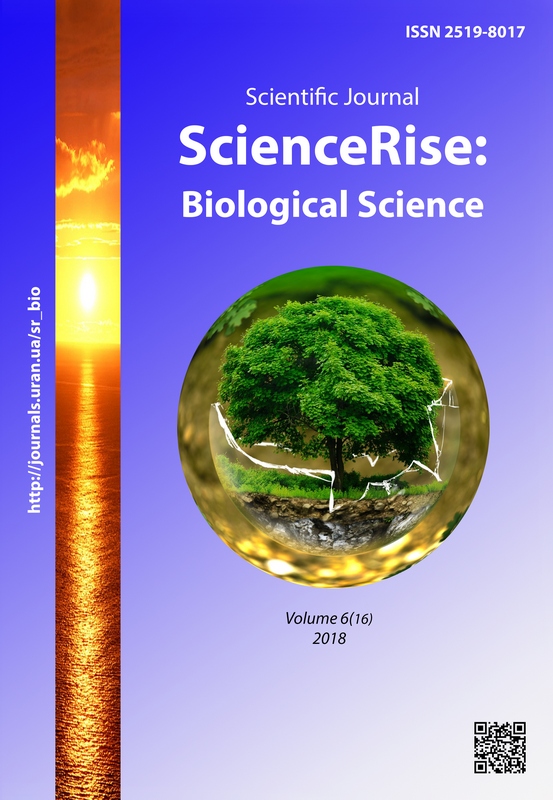Efficacy of complex treatment of acute necrotic pancreatitis using antibacterial drugs and polyvalent piobacteriophag
DOI:
https://doi.org/10.15587/2519-8025.2018.153838Keywords:
bacteriophages, acute necrotic pancreatitis, antibacterial preparations, bacteria, microflora, complex treatmentAbstract
Among surgical diseases of the abdominal cavity, acute necrotic pancreatitis is important. The total lethality in this disease is 4.28 - 5.50 %, and with its destructive forms in the postoperative period, it reaches 20 - 40 % [1,2,3]. The number of cases in which the development of the disease involved antibiotic resistant microorganisms significantly increased. In this regard, the treatment of acute necrotic pancreatitis needs improvement.
Aim. Improvement of the treatment of patients with acute necrotizing pancreatitis with the complex application of polyvalent pyobacteriofag and antibacterial preparations.
Method. A bacteriological study was performed on patients with acute necrotic pancreatitis, in which 49 strains of microorganisms were isolated from the manure both in the control and the basic (experimental) group. For the treatment of acute necrotic pancreatitis, antibiotics were used in conjunction with polyvalent pyobacteriofag (main group). Only antibiotics were used to treat patients in the control group.
Main results. In the experimental group of patients with acute necrotic pancreatitis, associations of microorganisms that were acting together with antibiotics and polyvalent pyobacteriophag were isolated.
According to the data obtained, the use of antibiotics, in combination with polyvalent pyobacteriophage in the complex treatment of purulent necrotic pancreatitis, accelerated healing of surgical wounds and recovery of patients.
Thus, the data that were obtained as a result of the complex treatment of acute necrotic pancreatitis with the use of antibiotics and polyvalent pyobacteriophag purified, indicate that the treatment of patients in the main group, compared with the control, was more effective.
Conclusions. The use of the complex therapy with an antibiotic with polyvalent piobacteriofag reduces the cost of the treatment, which has an important social and economic significance.
It has been proved that the use of polyvalent piobactyrophag, together with antibiotics in the complex treatment of acute necrotic pancreatitis, reduced the duration of the treatment to 39 ± 4, and with the use of antibiotics alone, treatment continued for 42 ± 6 years.
With the use of this technique, patients’ wound healing was at 6 ± 2 days, while at the treatment with antibiotics only wound was cleared by 12 ± 3
References
- Shirbokov, V. P., Voitsekhovsky, V. G., Avdeyev, L. V., Yakimenko, A. I. (2018). Suchasni uyavlennya pro formuvannya ta poshirennya rezistentnosti mikroorganizmiv do antibiotikiv [Contemporary notions about the formation and spread of resistance of microorganisms to antibiotics]. Chernivtsi, 102–107.
- Krasilnikov, I. V., Lysko, K. A., Otrashevskaya, E. V., Lobastova, A. K. (2011). Preparaty bakteriofagov: kratkiy obzor sovremennogo sostoyaniya i perspektiv razvitiya [Bacteriophage preparations: a brief overview of the current state and development prospect]. Sibirskiy meditsinskiy zhurnal, 26 (2 (2)), 33–37.
- Markov, I. S. (2012). Ostorozhno. antibiotiki:oranzhevіy signal trevogi! [Caution, antibiotics: orange alarm !]. Kyiv: Izdatel'stvo «ArtEk», 32.
- Mubarakshina, O. A. (2013). Primenenie preparatov bakteriofagov dlya lecheniya i profilaktiki bakterial'nykh LOR infektsiy. Farmateka. Spetsvypusk: pediatriya, s1-11, 10–14.
- Gabrielyan, N. I., Gorskaya, E. M., Tsirulnikova, O. M. (2012). Vozmozhnosty yspolzovanyia bakteryofahov v khyrurhyy y transplantolohyy [Possibilities of using bacteriophages in surgery and transplantology]. Vesnik of Transplantology of Artificial Organs, 14 (1), 106–113.
- d'Hérelle, F. (1917). Sur un microbe invisible antagoniste des bacilles dysentériques. Comptes Rendus de l'Académie des Sciences–Series D, 165, 373–375.
- Aleshkin, A. V. (2015). Istoricheskiy obzor opyta primeneniya bakteriofagov v Rossii [Historical review of the experience of using bacteriophages in Russia]. Medical Council, 7, 12–17.
- Krivoruchko, A. І., Kopchak, V. M., Usenko, O. Yu., Goncharova, N. M., Balaka, S. M., Teslenko, S. M., Andreuschev, S. A. (2014). Classification of guest pancreatitis: a review of the international consensus in. Classics from Priinya in Atlanta. Klinichna khirurhiia, 9, 19–24.
- Holt, J. (1997). Opredelitel' bakteriy Berdzhi. Moscow: Mir, 800.
- Katter, E., Sulakvelidze, A. (Eds.) (2012). Bakteriofagi biologiya i prakticheskoe primenenie [Bacteriophage biology and practical application]. Moscow: Nauchnyy mir, 2012. 640 p.
- Klimushkin, E. I., Feoktistova, N. A., Vasil'ev, D. A. et. al. (2015). Vydelenie bakteriofagov, spetsifichnykh k Bacillus anthracis [Isolation of bacteriophages specific for Bacillus anthracis]. BioKirov-2015, 12.
Downloads
Published
How to Cite
Issue
Section
License
Copyright (c) 2019 Valeriy Wojciechowski, Viktoriya Potochilova

This work is licensed under a Creative Commons Attribution 4.0 International License.
Our journal abides by the Creative Commons CC BY copyright rights and permissions for open access journals.
Authors, who are published in this journal, agree to the following conditions:
1. The authors reserve the right to authorship of the work and pass the first publication right of this work to the journal under the terms of a Creative Commons CC BY, which allows others to freely distribute the published research with the obligatory reference to the authors of the original work and the first publication of the work in this journal.
2. The authors have the right to conclude separate supplement agreements that relate to non-exclusive work distribution in the form in which it has been published by the journal (for example, to upload the work to the online storage of the journal or publish it as part of a monograph), provided that the reference to the first publication of the work in this journal is included.









